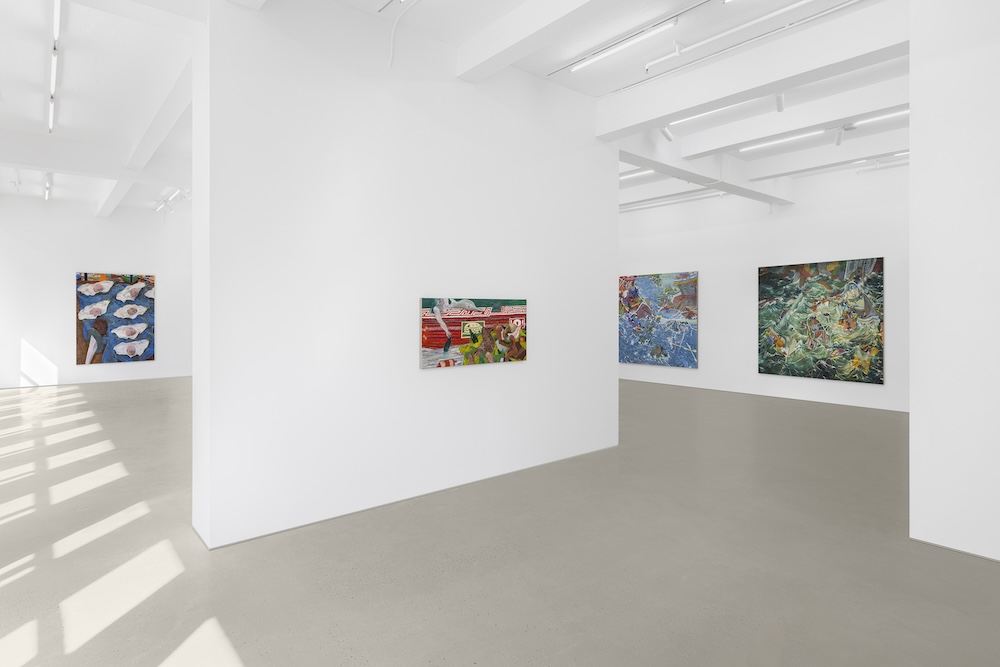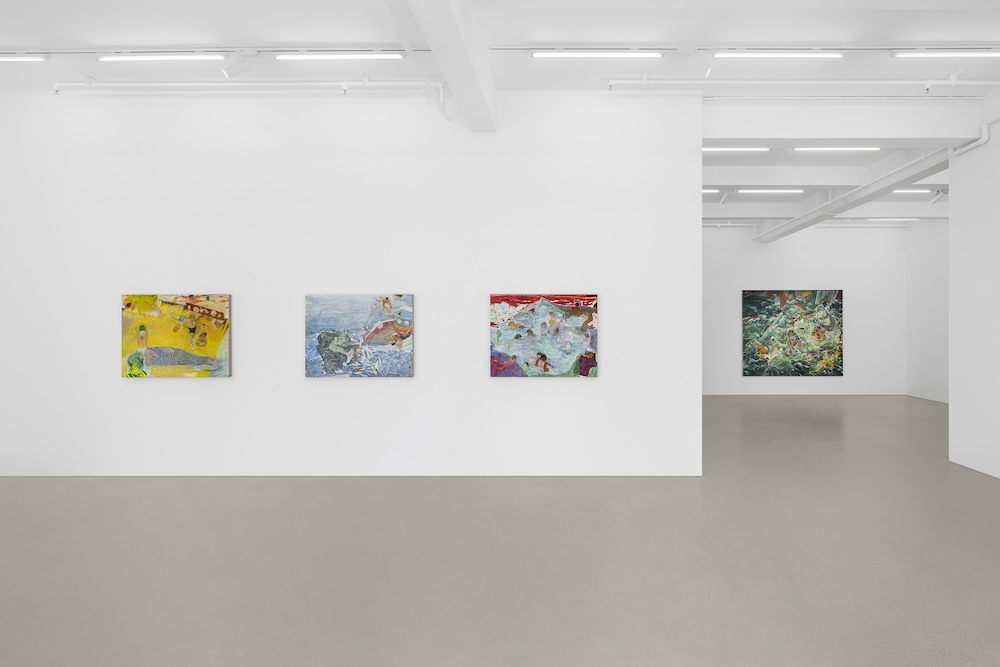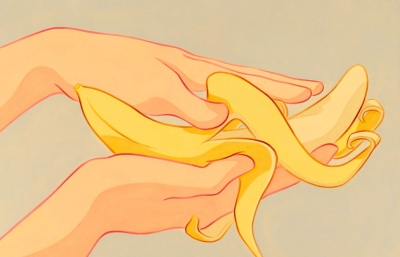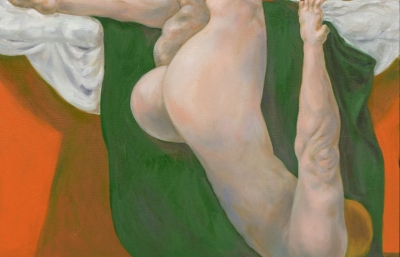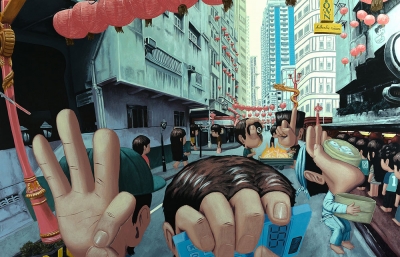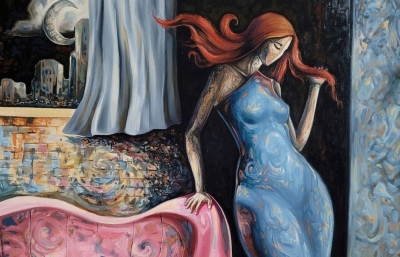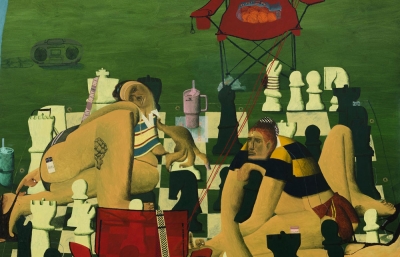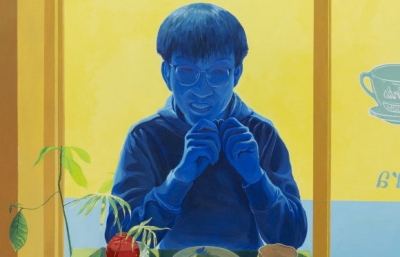Gallery Vacancy is pleased to present Waterplay, the inaugural solo exhibition of Henry Curchod in Shanghai, on view through December 21, 2024. On the occasion of this exhibition, the London-based artist debuts sixteen drawing-based paintings following a recent artist residency in Paxos, Greece. Using the leitmotif of sailors and fisherman: from depictions of life entwined with the sea, to their ancestral beliefs and maritime mythologies, this body of work not only illustrates the mercurial nature of the sea, but also serves as a poignant reminder of our dynamic relationship with it; presently safeguarded by a community that has itself been neglected.
Waterplay surveys the evolving vocabulary of his drawing practice, as raw, teetering gestural markings merge with the vibrant chromatic density of oil sticks – both vigorously and intimately. Employing an idiosyncratic fusion of drawing and painting, Curchod fundamentally underscores the immediacy and expressive vernacular that drawing affords. In tandem with the dynamism of his technique, the new works on view, characterized by crowds of humans and non-humans alike, demonstrate his sustained affinity for figuration.
In the exhibition, Curchod carefully binds his recent experience by the sea of Paxos to memories of his coastal upbringing in Sydney where he was ensconced in every aspect of aquatic life – fishing, boating, swimming, surfing; and first gravitated toward the sea as a source of inspiration. The title, a portmanteau of water and play, considers the metaphorical duality of maritime life, fuelled by notions of play and toil, the heroic spirit of daring and endurance, and the precarious gamble that ends in either victorious glory or violent death at sea. Much like J.M.W.Turner’s work conveying sensory experiences through seascapes during the steam age, Curchod’s paintings offer a compelling portrait of how the sea remains “changeful”, “wild” and “recklessly incoherent” in our contemporary era.
The metaphysical aspects of water coalesce into one unified vision in his cataclysmic work Mercy (2024), where an enraged sea crashes its white, pyramidal waves upon the masses–humans and non-humans–in menacing multitudes, setting the paltry crowd to act in frenzy. Curchod accentuates the sea’s muscular volatility with swift texturing lines, while simultaneously expressing the men’s desperation for survival in a chiaroscuro interplay of somber greens and deep blues. In other cases, such as Paxos Passion (2024), Curchod alludes to the sea as a witness, though a cold and indifferent one to the tragic collision of two trawlers into the black rocks. It observes the men cursing in fear, hurling frantically to the remnants of their boats as splintered planks and smashed wood drift amongst the dead. An intense and total loss of being that echoes the words of Joseph Conrad, “the sea has never been friendly to men”.
But Curchod also reminds us that the sea has its grace, and benevolence. Harkening to an anthropocentric perspective, the artist collects his gaze onto the seaward way of life: the seafarer’s skin flushed by the searing hues of sunset, children playing at the water’s edge, and fishermen cradling their catches in a bizarrely romantic way. At times, these narrative threads are woven with darker, ancient undertones. In Violent, fertile, salty (2024), the oyster’s aphrodisiac content is shaped as a baby’s smooth pinkish head, which makes its consumption uncomfortably twisted. Meanwhile, the fisherman’s infatuation with an aquatic figure in Surprise access (2024) leads to his demise at sea.
Here, Curchod’s contemporary vision of the mythical figure lies in a liminal realm: a woman, a lover and simultaneously a fish. His representations of sirens vary between works, always aiming to destabilize our understanding of what it means to be human. At times these mermaids are almost entirely piscine, depicted as a seal with a human posterior such as in Paxos passion (2024), and at other times as in Mum doesn’t care (2024), we see an atypical Byzantine-era siren, with feet emerging from the tail, as children work to keep them aqueous. As a dichotomy between the familiar and the unknown, the siren hints at the artist’s own sense of out-of-placeness amid the men at sea.
The unknowability of the sea goes not only beyond its vastness, but also into its depth. Concluding the maritime journey of his show, the artist delves into parables of the underwater world. In this silent depth, reprieved from the madness of the modern world, animate and inanimate marine life forms in Alien (2024) and Goodbye again (2024) lie inert in their final resting place, abandoned to the test of time. Through his watery visions, Curchod prompts us to expand on our bodily knowing and to cherish, as the people of Paxos have, the myth, beauty and bond with nature.




